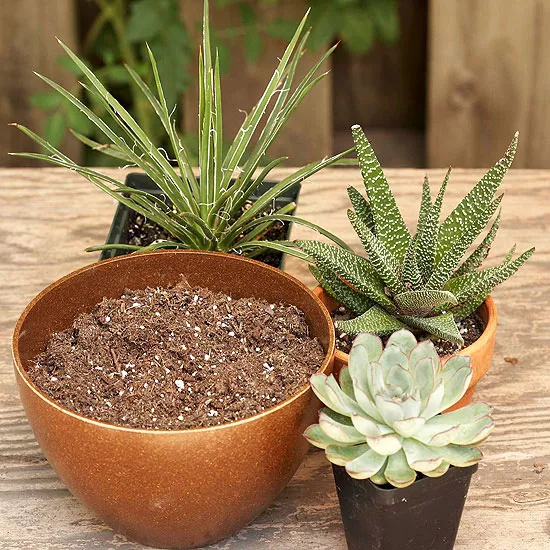Going to the garden center and picking up soil can be overwhelming—there are so many options. What soil you choose is important. Garden soils and potting mixes differ and should not be used interchangeably. Any soil can be improved and can be customized to create a plant-perfect blend.
Clay
Clay soil is heavy and sticky compared to other types of soil. It holds water well and compacts easily. Although clay can make gardening tricky because of its density and moisture levels, there are plenty of plants that can thrive in clay soil. Many ornamental grasses and prairie flowers do well in clay.
You can improve clay soil with organic matter, such as compost, leaf mold, and well-rotted manure. Organic matter is the best way to amend clay soil: It lightens the soil texture, discourages compaction, adds nutrients, improves drainage and aeration, moderates soil temperature, and provides pore space, which is essential to plant growth.
Sand
Gritty sand drains quickly and doesn't hold nutrients. On its own, sand isn't an ideal potting soil. But, other types of soil often benefit from using sand as a soil amendment to improve texture and drainage. Like clay soil, it can be improved with organic materials.
Silt
Crumbly silt holds nutrients and moisture but packs down like clay does. Silt particles are the happy medium between the small particles of sand and large particles of clay. This type of soil is often considered the intermediary of clay and sand, having some of the pros and cons of each.
Cacti and Succulent Mix
Cacti and succulents need well-draining soil to thrive—that's why many manufacturers make a mix specifically formulated for these types of plants. These types of soil have equal parts sand, perlite, and potting soil to provide the drainage these plants need. While you can buy this type of soil, you can also make your own mix with one-third horticultural sand, one-third cactus compost, and one-third grit in the form of pumice, perlite, or porous gravel.
Premium Mix
Plain potting soil can be a good match for plants but may need a few amendments to really help plants thrive. Jazz up potting soil by adding perlite, composted manure, vermiculite, and peat moss for a premium mix of materials. You can also buy a premium soil mix in stores. Be sure to look for organic potting soil, especially when planting edibles. Organic mixes use non-chemical fertilizers, which is better for the earth and your plants.
All-Purpose Mix
A blend of peat moss, vermiculite, and composted bark works for most plants. All-purpose soil mixes often contain time-releasing fertilizers, giving plants nutrients for longer. While most all-purpose mixes are not organic, there are a few companies who do make a less chemically-enhanced product.




















